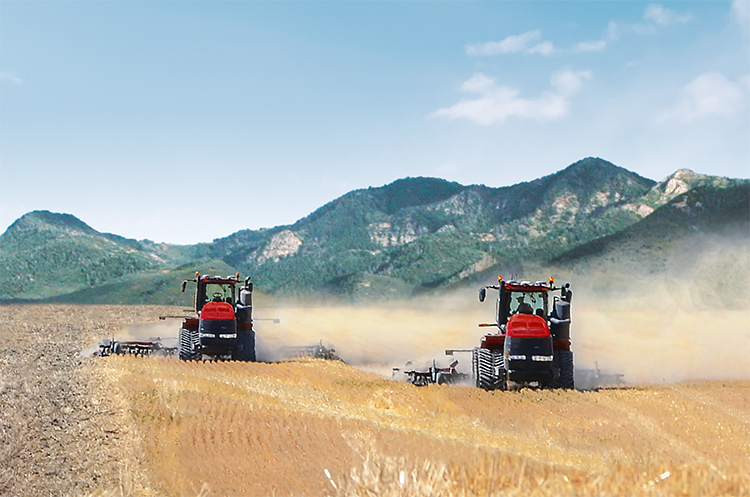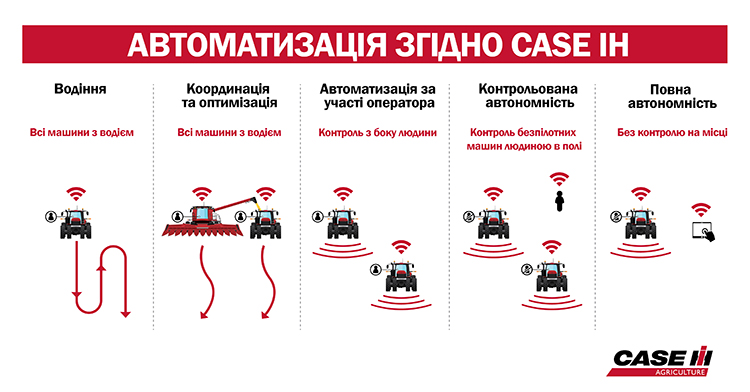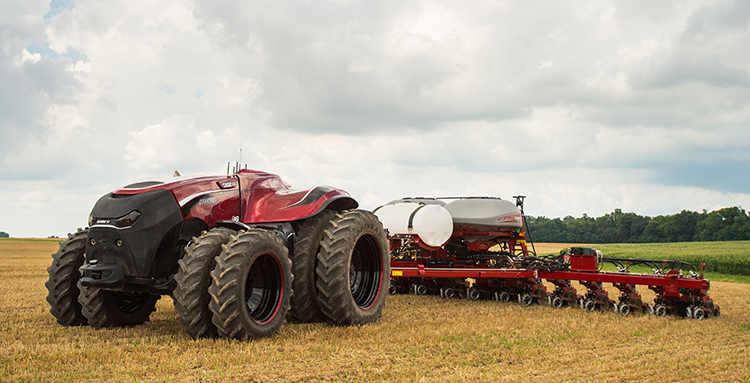-
AGRICULTURAL MACHINERY
- BRANDS
- Tractors
- Grain-harvesting combines
-
Sowing machinery
- KUHN Planter 3 Select precision seed drill
- Sowing complex KUHN ESPRO 6000RS
- Precision seeder KUHN KOSMA Select
- Case IH SDX 30/40 pneumatic sowing machine
- BEDNAR OMEGA OO_L sowing machine
- A wide seed drill BEDNAR EFECTA CE
- Grain seeder BEDNAR OMEGA CORSA CN
- Pneumatic precision seed drill KUHN MAXIMA 3 TRM E
- MATADOR MO sowing machine
- Sprayers
- Tillage machinery
-
Harvesting machinery
- Olimac Drago 2 corn harvester
- Olimac Drago GT corn harvester
- Olimac Gold sunflower harvester
- Franco Fabril SF sunflower harvester
- Case IH 3020 TeraFlex
- Case IH Grain harvesters
- Case IH 3050 Varicut
- MacDon FD2 corn harvesters
- Grain reaper Case IH 2030
- Case IH 4408 corn harvester
- Case IH 4412 corn harvester
- PW8 Pick-up Header
- Corn harvester FRANCO FABRIL MH870
- Mower
- Balers
- Rollers
- Telescopic loader
- USED Machinery
- Large spreader of mineral fertilizers KUHN Axent 90.1 EMC
- combined disc-paw unit KUHN PERFORMER SELECT
- SAFEGUARD WARRANTY
-
PRECISION AGRICULTURE
- AgroDrones & UAV
-
Tractor solutions
- Raven CR7 Field Computer
- XCN - 2050 display
- Дисплей XCN-1050
- XCN-750 display
- Autopilot Electric Motor Drive automatic driving system
- Automatic driving system EZ-Pilot Pro
- AFS AccuGuide precision farming system
- Automatic water system Sveaverken F100
- Raven hydraulic autopilot for unprepared equipment
- Trimble Autopilot automatic control system
- Sprayer solutions
- Combine solutions
- Trailed implements solutions
- Correction service
- Maintenance of data
- USED MACHINERY
- SERVICE
- PARTS
- SPECIAL OFFERS
Case IH develops autonomy and announces start of a pilot program
03/27/2018
Since Case IH introduced the concept of an autonomous tractor, it has continued to improve this technology and deepen the development of automation and autonomy in agriculture.
The company has initiated a two-way dialogue with customers around the world so as to find out how the practical implementation of this technology could help customers increase the efficiency and profitability of their business. Case IH Company is launching its Autonomy and Automation Program to explore the potential of this technology and test it in real life.
“The concept of an autonomous tractor presented in 2016 demonstrated the world’s capabilities of autonomous machinery, but at that time it was only a concept. This working prototype of the tractor provided us with the necessary basis to enter into a dialogue with farmers and the agricultural industry on the technologies that high-efficiency agriculture operations require today and will require tomorrow”, says Robert Zemenczyk, Case IH General Manager for AFS Products. “We are ready to demonstrate how automation and autonomy can be applied in agriculture and how they can make a big step forward in the segment of precision farming solutions which are already actively used by our customers on their farms”.
Five categories of automation in agriculture
Different farming operations around the world require different levels of automation. As part of an in-depth study of “Development of product with the customers’ participation” Case IH found that current and future technology needs can be divided into five categories according to the degree of automation in agricultural field operations. These categories and related activities are as follows:
- Driving
- Coordination and optimization
- Automation with the operator’s participation
- Monitored autonomy
- Full autonomy
“We are very excited to explore the benefits that automation and, finally, full autonomy can bring to each type of agricultural work”, adds Mr. Zemenczyk. “These categories are designed to demonstrate all the potential. They are not linear, and some of the existing fleets may fall into several categories at the same time. Already today, many of our customers work in the categories of “Driving” and/or “Automation with the operator’s participation”.
The five categories defined by Case IH begin with individual automated tasks performed by one of the components of the machinery. Case IH Company was pioneer in this field as it was the first company to offer automatic driving technology based on AFS AccuGuide™ in the 1990s, and today it continues demonstrating better solutions to its customers, such as AFS AccuTurn™ automated technology of turning at the ends of the drives and Soil Command™ technology of analysing condition of the seedbed.
Autonomous technology testing in the field
In 2018, Case IH Company began cooperating with Bolthaus farm as part of a pilot program for an autonomous tractor. The purpose of this program is to understand how new autonomous technology can be used in real conditions and to determine the degree of its compliance with existing requirements of farms.
“The only way to assess the practical prospects of autonomous technology in the field is to conduct literally field pilot tests where farmers will use it in their farming activities, integrate into their fleets and carry out their daily operations”, says mister Zemenczyk. Bolthaus farm, one of the largest carrot producers in North America, works all year round on its large plots of land in four states in the United States and Canada. The company’s close attention and its openness to the novel technologies combined with its commitment to raising productivity makes it an ideal candidate for the Case IH pilot program to explore autonomy and automation. The pilot program will focus principally on primary tillage and deep tillage, both of which have a high degree of recurrence and are carried out throughout the year by Bolthaus. A small fleet of Steiger® Quadtrac® autonomous tractors which will perform traction will also be tested as part of the program.



INDUSTRIES
BRANDS


